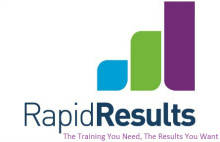Induction, onboarding, welcoming, whatever name you use for your programme it means the same thing: reinforce the person’s decision to join your organisation and give them the skills and confidence to ensure they can do what they have been hired for.
The benefits of a successful induction programme are:
- Lower staff turnover therefore lower recruitments costs and less disruption to your business and your customers.
- Improved staff morale and loyalty leading to increased production.
- Faster speed to competentcy and therefore faster results.
While formal induction processes may begin when the new employee first arrives to begin work, first impressions of an organisation are made much earlier – usually when the new employee makes initial contact through the recruitment and selection process. Impressions formed by new employees within this period and during their first 60 to 90 days on the job are lasting, with the first day being particularly crucial.
The main issues that we tend to see when reviewing an organisations induction programme are very similiar.
Common issues with induction programmes:
Longer than it needs to be
The organisation changes and grows and so does its products, services and processes therefore these changes keep getting added to the induction programme. Before you know it you looking at weeks and weeks of training that in reality is a waste of time as the new staff member may not use it / it wasn’t relevant to the job.
The main reason this occurs is the fact that the induction training is not ‘formally’ owned by anyone and therefore does not get reviewed on a regular basis. Trainers come and go and take over historical material adding their own material, flair and ideas. This leads to a mishmash of different materials, designs and delivery styles.
Out of touch
How often have you heard someone say ‘don’t worry about what they taught you, this is how we really do it’? This where the training department / trainer are out of touch with the reality of the day to day business. This of course means that the induction can be seen as a waste of time for the new staff member as well as taking longer to make them productive for the organisation.
Induction is boring / badly delivered
Usually in-house trainers are selected for a number of reasons; they might have been with the organisation for a number of years, they have high product knowledge, they wanted a promotion etc. Just because someone has been with the organisation for a long time and / or has great product / company knowledge it does not automatically make them a good trainer. Now add this issue to overburdened course material, design flaws over a number of months or years by a range of different staff with material that is out of date or out of touch and you can begin to see why some inductions fail.
Examples
A government department trained new staff for five weeks by sitting round a table reading operations manuals. Really? Can you imagine what you would be thinking about your decision to join this organisation?
Another organisation had a high attrition rate of new staff before the induction programme had even finished. Those that hung on needed refresher training once they were out in the business!
 Quick solutions
Quick solutions
Here are some quick fire ideas to ensure you maximise the new potential you have just spent money convincing they should work for you.
1) Accountability and ownership – someone in the organisation must own the induction programme lock, stock and barrel. This means one point of contact for changes, updates, design, course plan flow, speakers etc.
2) Version control – make sure your induction documents / materials have a version control. Ensure only the latest materials are being used.
3) Central location / repository for all materials – One central location in your file system for all materials, activities, course plans, timetables, speaker lists etc. This needs to be designed so anyone can pick it up and run with it should a trainer leave or be off sick.
4) Relevance – ONLY train on what people need to know to do their job. We tend to overload people and keep throwing more and more material at them until they become overwhelmed. What critical information do they need to know to do their job for the next 3 / 6 / 9 months?
5) Make sure your trainers are trainers – anyone who is in charge of training new staff (in fact training full stop) should have been through a train the trainer course and developed skills to deliver training to maximise the impact, not just read through the material.
Conclusion
When an induction programme is designed correctly it is:
- Timely
- Relevant
- Engaging / fun / stimulating
- Reinforces the person made the right choice to join your organisation
- Is measurable
- Gives people the confidence they can do the role.
For more information on how Rapid Results can assist you with your induction design or review your existing programme contact us at www.rapid-results.com or 0800 338356

Recent Comments